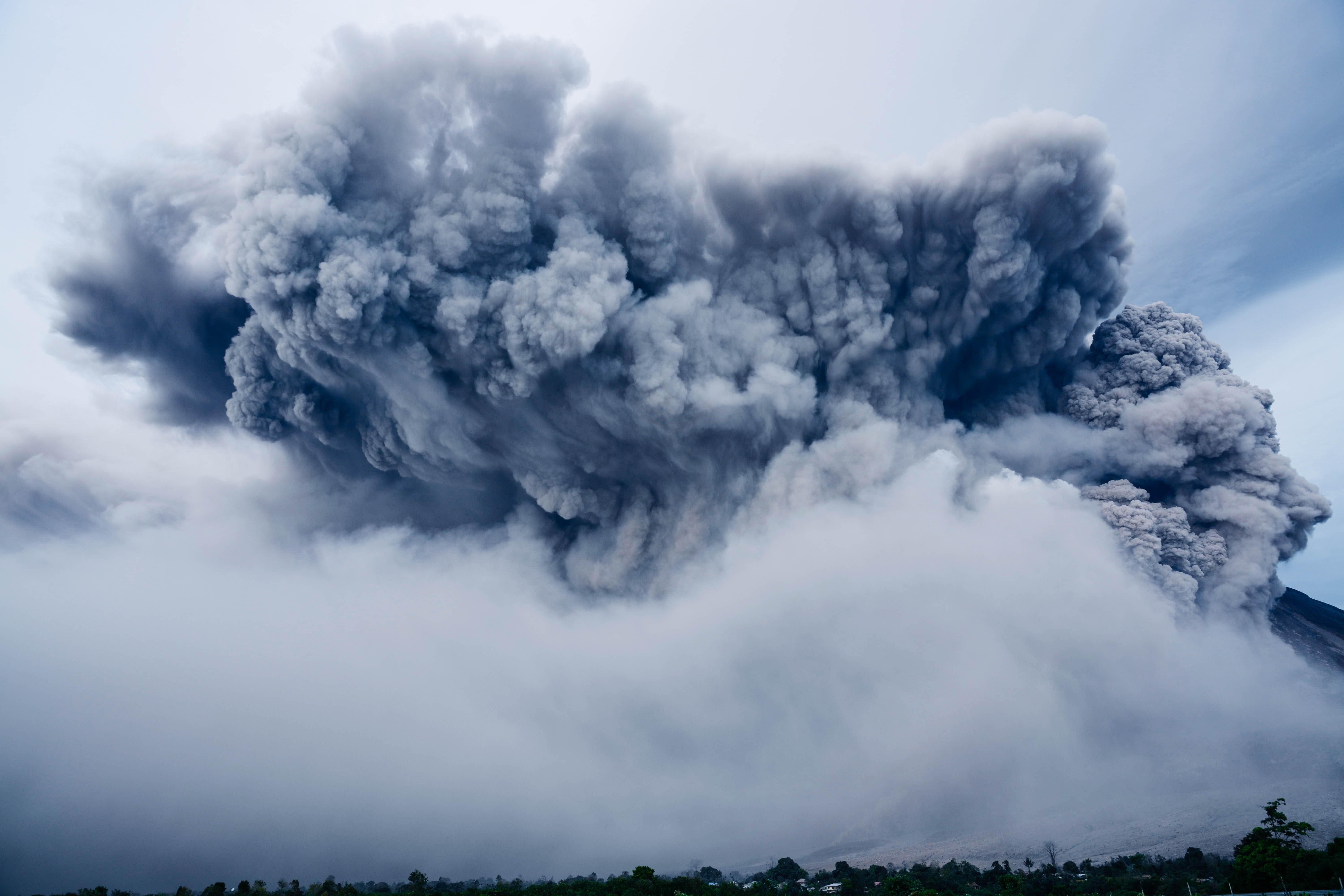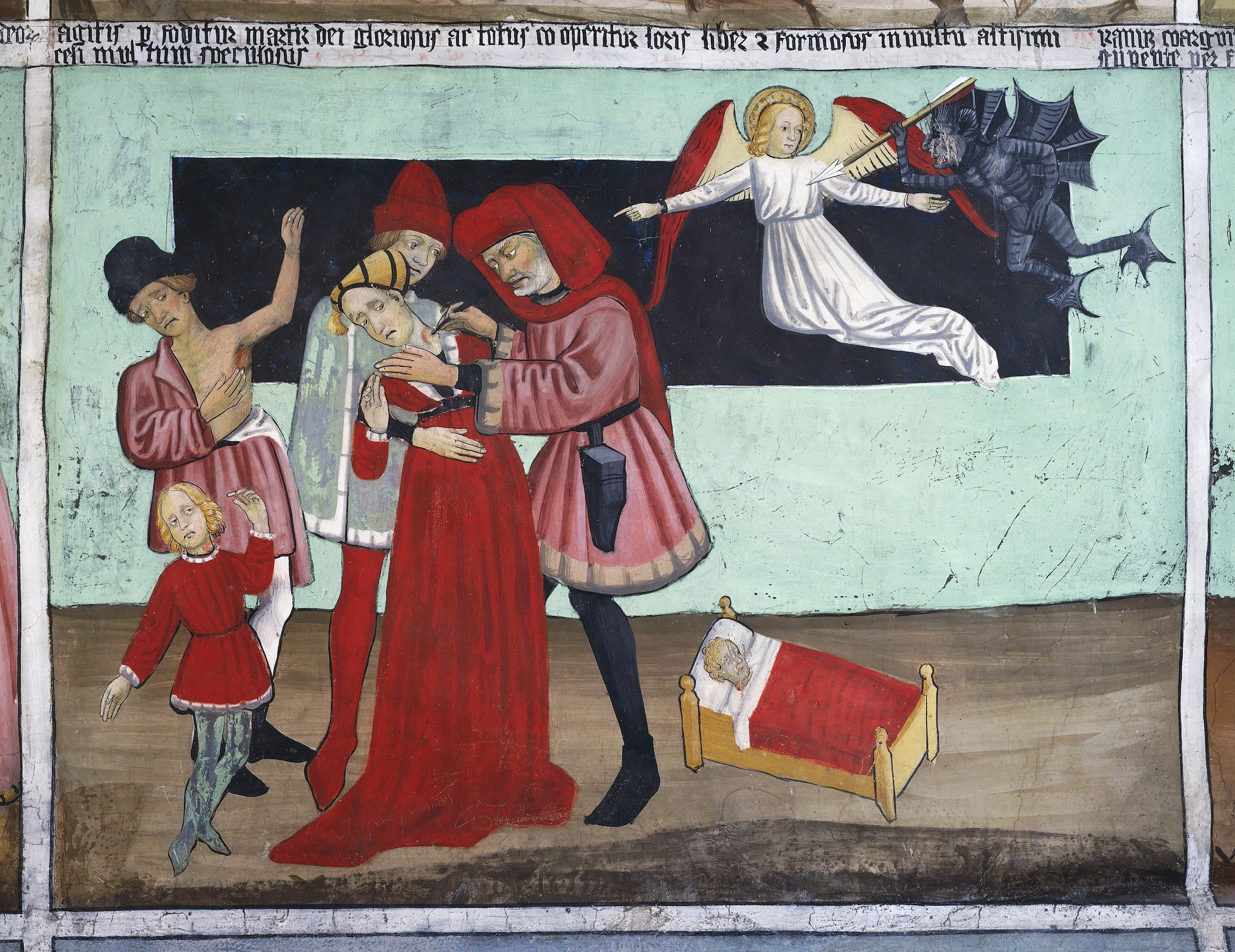
Other awful years in history

2020 has been grim, but there have been worse years. Here, experts from science, history and literature take us through just some of the other terrible times
Published 18 September 2020
Around the world, people can’t wait for 2020 to end. COVID-19 has killed close to a million people globally over the course of the pandemic.
On top of the coronavirus, there’s been significant floods in Uganda, Kenya, Pakistan and the UK, Australia has experienced devastating bush fires, storms have battered the Americas, and locusts have devastated parts of Africa, the Middle East and Asia.
Now, parts of the US west coast are disaster zones amid ongoing wildfires.

But if you think this year is bad, think again.
Here, University of Melbourne experts take a look at some of the other thoroughly difficult years in human history – and how we made it to the other side.
74,000 bce
Hayden dalton, researcher and phd candidate, school of earth sciences, faculty of science
Approximately 74,000 years ago was a pretty dire time for the human species. To put what happened then into perspective, let’s look at a more recent example.
Volcanoes represent striking surface expressions of deep earth processes, producing spectacular fireworks. They’re also more than capable of causing serious disasters for the inhabitants of Earth.

Perhaps one of the most recent and well-publicised events was the Eyjafjallajökull eruption in Iceland in 2010. This eruption brought European air travel to a standstill after it spewed 480 million tonnes of rock and dust (tephra) up to 10 kilometres into the atmosphere in a plume capable of producing lightning.
The fallout from this enormous ash cloud was readily detected in the United Kingdom and mainland Europe; it was a volcanic eruption rated a four out of eight on the ‘volcanic explosivity index’ (VEI).
If we look back in geological history, we find that the Iceland eruption pales in comparison to the Toba eruption in Sumatra in Indonesia which is thought to have taken place around 74,000 years ago.
Ash from this eruption has been found in Lake Malawi and on the southern coast of South Africa, some 8,000 kilometres away.
This ‘super-eruption’ (VEI 8/8) ejected more than seven trillion tonnes of volcanic debris and is likely to have drastically altered the climate, leading to several dismal years for humans as well as other fauna and flora.

For example, some models propose that regions of the Earth underwent several years of a ‘volcanic winter’ where temperatures may have been four to 8 °C cooler than the average.
While life was undoubtedly tough for Earth’s inhabitants during these decades there is much debate over the extent to which it affected our ancestors and whether or not it caused a critical decrease in human population – or a genetic bottleneck.

Arts & Culture
Journal of the plague year
Recent work actually suggests human populations in parts of India and South Africa demonstrated great resilience, despite the probable decrease in availability of both animal and plant food sources.
536
Associate professor frederik vervaet, ancient world studies and classics, faculty of arts
According to an interdisciplinary team of historians and scientists, the year 536 marks “the beginning of one of the worst periods to be alive” in recorded history.
A cataclysmic volcanic eruption (probably in Iceland) covered the northern hemisphere in what seemed like a mysterious fog.
In Book 3.14 of his History of the (Justinian) Wars, the early Byzantine historian Procopius (c. 500-570) vividly recounts this event, which persisted into 537:
“And it came about during this year that a most dread portent took place. For the sun gave forth its light without brightness, like the moon, during this whole year, and it seemed exceedingly like the sun in eclipse, for the beams it shed were not clear nor such as it is accustomed to shed. And from the time when this thing happened men were free neither from war nor pestilence nor any other thing leading to death.”

This volcanic winter (compounded by two further eruptions in the 540s) led to the coldest decade on record in the last two thousand years, triggering calamities and untold misery across the world.
The Gaelic Irish Annals record “failures of bread from 536-539”. China saw snowfall in August and harvests were delayed or failed. Even in Peru, the Moche culture was hit by drought.
All of this made for the perfect conditions for one of the world’s deadliest pandemics – bubonic plague.
Believed to have originated in China and passed through India, the so-called Plague of Justinian (named for the Byzantine emperor of the time) arrived in Constantinople in 542 through grain ships from Egypt before engulfing the rest of the Mediterranean, Europe and the Persian Empire.
It is estimated this pandemic killed at least 25 million people worldwide.

Arts & Culture
Volcanic winter and pandemic pandemonium
1347/1348
Dr catherine kovesi, school of historical and philosophical studies, faculty of arts
If we’re going to be competitive about the worst of times, then 1347/8 – the time of the so-called Black Death – would certainly be in the running.
With prescient similarities to our current COVID-19, this outbreak of plague also began somewhere in ‘the East’ and arrived in the west in Italy, which had the worst initial outbreak.
Though popularly and repetitively understood as bubonic plague, this is unlikely, hotly debated, and the actual cause of the Black Death remains unknown.
In the first documented instance of attempted biological warfare, in 1346 the besieging Mongol forces of Yanibeg (Djanibek) Khan used trebuchets to hurl the bodies of men who had died from a mysterious plague into the Genoese trading fortress of Caffa in the Crimea.

Merchants returning from Caffa docked in Messina, Sicily, in October 1347 with all on board suffering from a mysterious malady.
Over the next 18 months, the plague spread with deadly speed through Italy and on into the rest of Europe, to Iceland and to Russia, killing anywhere between 25 to 50 million people – an estimated 30 to 50 per cent of the European population and many millions more in Eurasia and the East.
One chronicler described the process of burying the quantity of dead in plague pits, with the layers of bodies and of earth being “just as one makes lasagna with layers of pasta and cheese.”

Arts & Culture
How have plagues and pandemics influenced the arts?
In trying to contain it, the Venetian trading port of Ragusa (modern-day Dubrovnik) instituted 40 days of quarantine for the sickly (from quarantia meaning 40), and the measure was soon adopted in Venice itself.
Fearing it was caused by corrupted airborne vapours, or miasma, others adopted the Germanic practice of sealing bodies in wooden coffins and countering the bad airs (and stench) with fragrant herbs.
Others spread conspiracy theories that it was caused by Jewish people who had poisoned the wells, and many thousands of Jews were burned alive in pogroms (2,000 on St Valentine’s Day in Strasbourg alone).
By 1351, 60 major and 150 smaller Jewish communities in northern Europe had been destroyed.
1816
Professor deirdre coleman, robert wallace chair of english, faculty of arts
In 1815, Indonesia’s Mount Tambora erupted throwing a massive sulphate dust cloud up into the sky and unleashing a destructive wave of extreme weather.
The following year, 1816, became known as ‘The Year without a Summer’ when the sun dimmed, temperatures dropped and harvests failed – bringing famine across Europe and many other parts of the world.

It was during this year that a scandalous group of young writers, including Mary and Percy Bysshe Shelley, took lodgings in Geneva near Lord Byron, the rock star poet of his age.
But instead of boating on the lake, picnicking and walking in the mountains, the British tourists were cooped up indoors for weeks of dark, dreary, and very wet weather.
So bad was this summer that Byron wrote ‘Darkness’, an apocalyptic end-of-the-world poem which envisages the extinction of the sun:

Arts & Culture
Is this the earliest depiction of a dodo in art?
I had a dream, which was not all a dream. The bright sun was extinguish’d, and the stars Did wander darkling in the eternal space, Rayless, and pathless, and the icy earth Swung blind and blackening in the moonless air; Morn came and went—and came, and brought no day, And men forgot their passions in the dread Of this their desolation . . .
To pass the long days, Lord Byron suggested a ghost story competition, and it was out of this game that two famous gothic tales arose.
One, composed by Byron’s physician, John Polidori, would later be published as The Vampyre in1819. The other was Mary Shelley’s Frankenstein in 1818.

Back home in Britain, the poets John Keats and William Wordsworth were also noticing ruptures in the established rhythms of the natural world.
Wordsworth noted that the summer was so wet that the bees were unable to work, and most starved to death in the winter.
Keats, studying botany as part of his training to be a doctor, described the spring of 1816 as “backward”, with the oaks at Coombe wood outside London “as perfectly naked” in May as they were at Christmas.
Although the temperatures went down rather than up in the period between 1816 and 18, the extreme weather events unleashed by Mount Tambora produced disasters similar to our own today: drought, wildfires, floods and epidemic disease.
For a few months in 1816, the meteorological disturbances of that ‘year without a summer’ generated an emotional disquiet amongst the Romantics, exacerbated in turn by interpersonal tensions and physical restriction.
The various ecological disasters were still in the making, but the enforced time indoors unleashed powerful imaginings of what the future might hold – resulting in some of our most haunting and enduring works.
Banner: ‘The Triumph of Death’ by Pieter Bruegel the Elder (c. 1562)/ Wikimedia Commons




